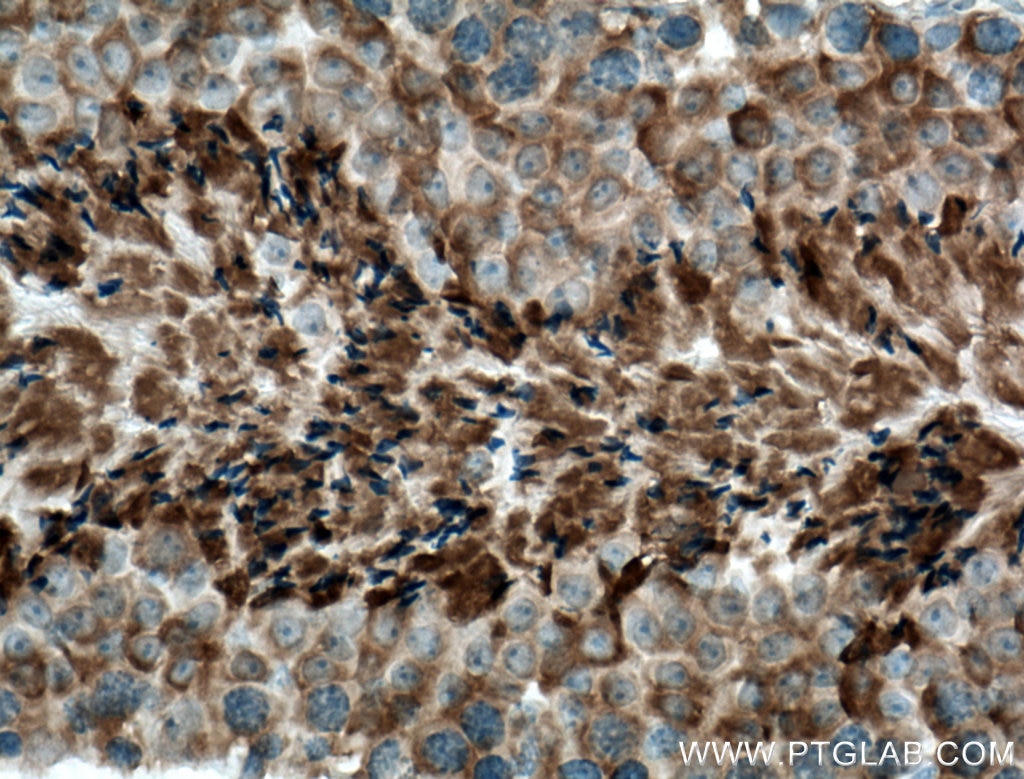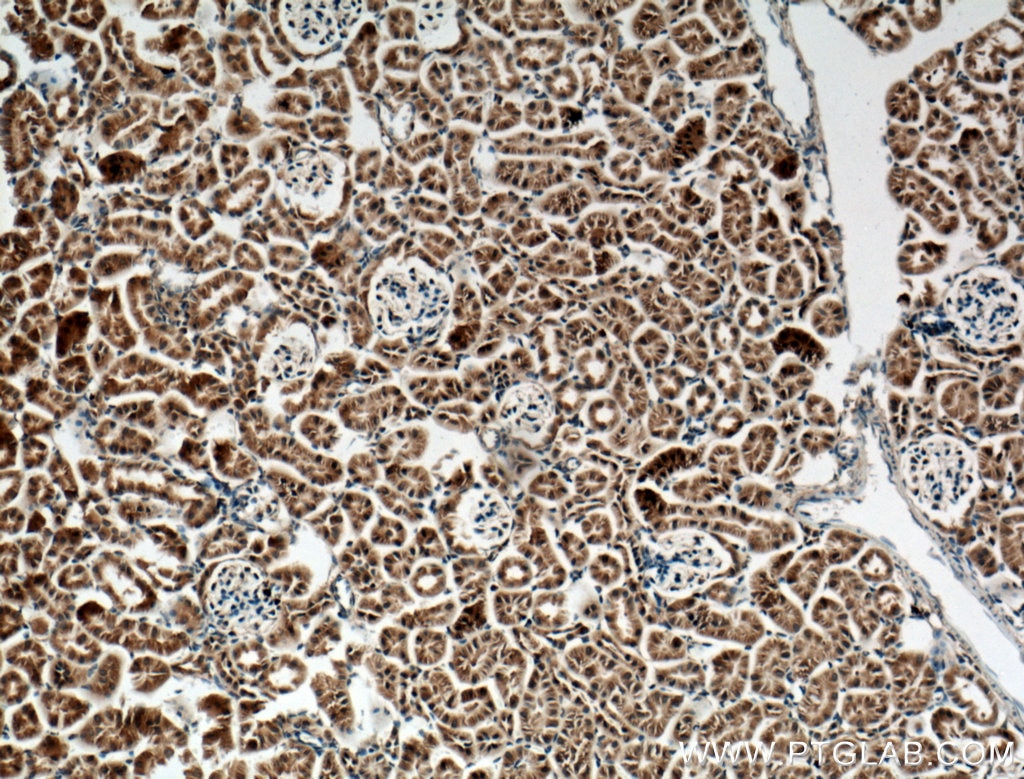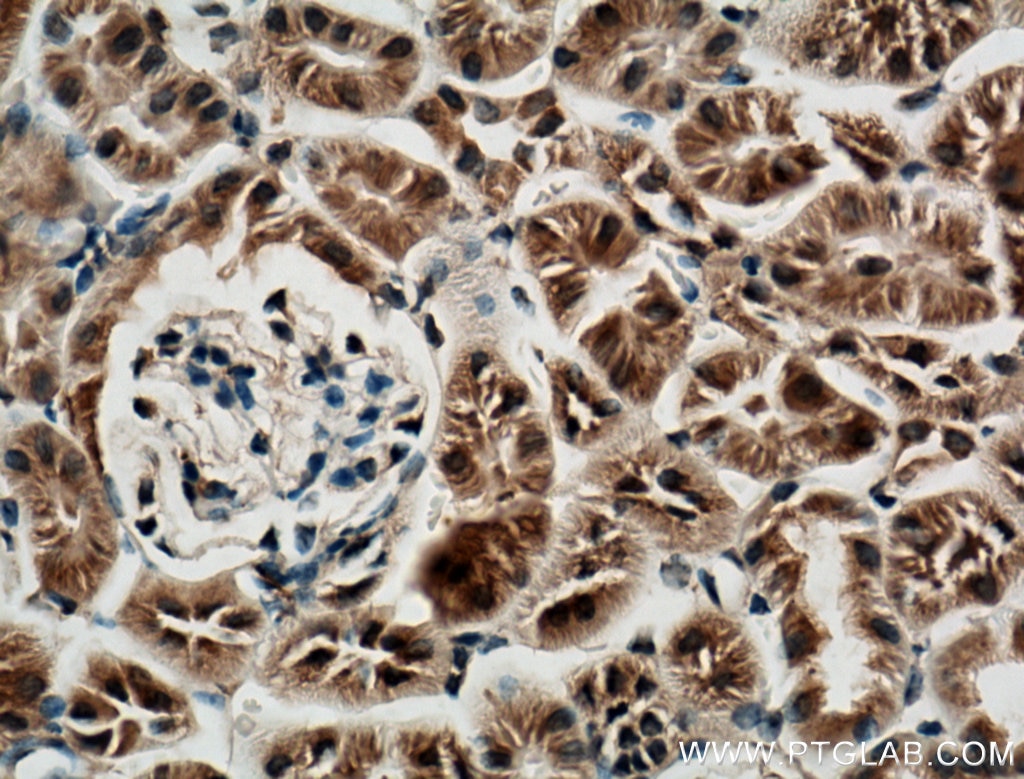Tested Applications
| Positive WB detected in | HeLa cells |
| Positive IHC detected in | mouse testis tissue, mouse kidney tissue Note: suggested antigen retrieval with TE buffer pH 9.0; (*) Alternatively, antigen retrieval may be performed with citrate buffer pH 6.0 |
Recommended dilution
| Application | Dilution |
|---|---|
| Western Blot (WB) | WB : 1:500-1:2000 |
| Immunohistochemistry (IHC) | IHC : 1:50-1:500 |
| It is recommended that this reagent should be titrated in each testing system to obtain optimal results. | |
| Sample-dependent, Check data in validation data gallery. | |
Published Applications
| WB | See 1 publications below |
Product Information
26630-1-AP targets CLRN1 in WB, IHC, ELISA applications and shows reactivity with human, mouse samples.
| Tested Reactivity | human, mouse |
| Cited Reactivity | human, mouse |
| Host / Isotype | Rabbit / IgG |
| Class | Polyclonal |
| Type | Antibody |
| Immunogen |
CatNo: Ag24289 Product name: Recombinant human CLRN1 protein Source: e coli.-derived, PET28a Tag: 6*His Domain: 156-232 aa of BC074970 Sequence: ASEVKIHHLSEKIANYKEGTYVYKTQSEKYTTSFWVIFFCFFVHFLNGLLIRLAGFQFPFAKSKDAETTNVAADLMY Predict reactive species |
| Full Name | clarin 1 |
| Calculated Molecular Weight | 232 aa, 26 kDa |
| Observed Molecular Weight | 23 kDa, 27 kDa |
| GenBank Accession Number | BC074970 |
| Gene Symbol | CLRN1 |
| Gene ID (NCBI) | 7401 |
| RRID | AB_2880579 |
| Conjugate | Unconjugated |
| Form | Liquid |
| Purification Method | Antigen affinity purification |
| UNIPROT ID | P58418 |
| Storage Buffer | PBS with 0.02% sodium azide and 50% glycerol, pH 7.3. |
| Storage Conditions | Store at -20°C. Stable for one year after shipment. Aliquoting is unnecessary for -20oC storage. 20ul sizes contain 0.1% BSA. |
Protocols
| Product Specific Protocols | |
|---|---|
| IHC protocol for CLRN1 antibody 26630-1-AP | Download protocol |
| WB protocol for CLRN1 antibody 26630-1-AP | Download protocol |
| Standard Protocols | |
|---|---|
| Click here to view our Standard Protocols |
Reviews
The reviews below have been submitted by verified Proteintech customers who received an incentive for providing their feedback.
FH Sunny (Verified Customer) (10-02-2025) | The antibody helped capture the full length Clarin-1 protein which was produced in our lab using the cell free expression system of ALiCE. This was a good confirmation of the produced protein after we saw the SDS- PAGE band.
|












